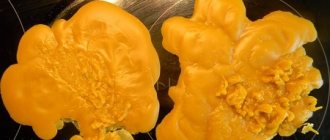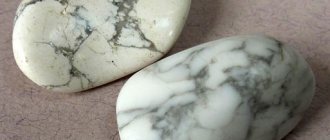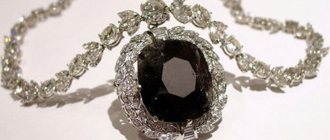» Magic Items » Talismans » The most popular Japanese talismans
0
4382
Article rating
To lure good luck into your home, ward off illness from yourself and your loved ones, become successful at work and much more in distant Japan can be done with the help of special magical objects. Japanese talismans have a wide sphere of influence, and the Japanese have a reverent and respectful attitude towards them. Let's find out what they are and what they serve.
Japanese mascots
The most popular Japanese talismans
There are a great many Japanese amulets and talismans; behind each there is a legend telling about their origin. However, there are also the most popular talismans, which each of us, if not heard of, then saw at least once in our lives, and did not even suspect their power.
Mascot cats
Mascot cats are very popular in Japan, they are called Maneki-neko. These are cute figurines of cats with one paw raised up - left or right, for money or good luck, respectively.
It is believed that they give their owner good luck in business, bring wealth, and protect the family hearth. He is also called the money cat, the cat of happiness. Maneki-neko is placed in an honorable and prominent place in the home, office or other workplace so that it “calls” well-being, because the name “Maneki-neko” itself means “calling cat.”
The figures are made from completely different materials: paper (using the origami technique), porcelain, glass, wood, etc. Sometimes the cat is made with a coin in its paws, the so-called Koban, known in the Edo period. Preferably, the figurines are painted white, and the spots on the body are colored (usually three colors are used at once). Although there are black and red cats, they protect against serious illnesses.
History of Maneki-neko
There are several legends about the origin of the cat mascot. The most common one is about the old woman Imado, who was so poor that one day she had nothing to feed even her cat. So the old woman drove the cat away. When night fell, the animal came to the owner in a dream, telling her to fashion a cat out of clay and place it near the road.
Imado decided to do as she was told. A random passer-by, seeing a figurine of a cat, wanted to buy it. This is what the old woman did and soon became rich by selling clay cats.
Omamori
The kind of amulet you can find everywhere in Japan is Omamori. It is considered a very powerful amulet, even the name comes from the word “mamori”, i.e. "protection".
The Japanese, using Omamori to attract happiness, success and fulfillment of desires, make it with their own hands in the form of a bag using silk fabric. A coin, herbs are placed in the bag, hieroglyphs, an image of Buddha, prayers and other sacred symbols are applied to it. The amulet is carried on one’s person, placed in a wallet, hung on bags, on mobile phones, placed in a car, above a bed, etc.
The main condition is to never open the bag so that it does not lose its magic.
Omamori are:
- for good health - Kanai Anzen;
- for women expecting replenishment - Anzan;
- for success in love affairs - En Musubi;
- for entrepreneurs - Sho:bai Hanjo;
- for pets – Patto Omamori;
- for those who study - Gakugyo: jo:ju;
- for those who travel - Ko:tsu: anzen.
What is the significance of amulets and talismans in Japan?
Almost every resident of the Land of the Rising Sun has an amulet that protects him from evil spirits or brings him good luck in business.
The scope of application of talismans can be different:
- assistance with studies, which is especially popular during exam periods;
- attracting love and career advancement;
- guarantee of monetary enrichment.
The Japanese believe in the divine power of amulets and place them not only in their homes, but also carry them with them: in a wallet, bag, or, for example, as a keychain on a phone.
Talismans for all occasions
Japanese amulets serve, in principle, all those benefits and purposes that are valued throughout the world: health (snake), family, love (lotus flower), etc. What is noteworthy is that many Chinese symbols, incl. belonging to the ancient teachings of Feng Shui, originate from Japanese amulets.
From the evil eye
Inuhariko protects from black witchcraft, damage and bad people. This is a dog made of light material (gypsum, paper). In addition to protection from an evil tongue, Inuhariko brings a person inner harmony and tranquility. Parents give it to their young children to protect them from the influence of evil spirits.
For good luck
Hanamusubi, also a very common Japanese amulet, will bring good luck and help in overcoming difficulties. A red cord threaded through a small coin with a hole is called Hanamusubi and is worn on the hand like a bracelet.
Success is attracted by animal figurines: toads, turtles, foxes or the Katsumori amulet - a figurine with a scroll on which the owner’s name should be written. Katsumori is useful for students during sessions, athletes at competitions, or people undergoing an interview.
Family and love
In order for the relationship between the spouses to be cloudless, it is necessary to place a figurine of a lotus flower - a symbol of love - near the bed. It can be made from plastic, porcelain, glass.
The figure of a toad also attracts joy and peace into the house. From time to time they water it with water to appease it.
Surubobo (translated as “baby monkey”) is another talisman for a happy marriage, which grandmothers used to make for their granddaughters. It is made in the form of a doll, but without a face.
How to do it yourself?
If you have wood carving skills, a good amulet made by yourself can be a kokeshi doll - a figurine of a Japanese girl, painted with paints. In Japan, grandmothers make Sarubobo dolls for their granddaughters. To make it you will need scraps of bright fabric and cotton wool or other filler.
Since the talisman must be of a certain size, certain sizes of canvas should be used:
- rectangle 7.5x6.5 cm - for the body;
- a round piece with a diameter of 7.5 cm - for the head;
- triangle 8x10x8 cm - for a hat.
You will also need a small piece for the belt.
Japanese wisdom says that talismans made by yourself will be unusually effective. When creating amulets from clay, plastic, wood or fabric, you need to put on them the selected hieroglyph symbolizing luck, love or victory.
The last step in creating your own talisman will be the ritual of calling into an energy amulet. To carry it out, you need to wake up at sunrise and take sea salt and four large white candles. After pouring salt around the object, you should light candles, bow to the cardinal points and, looking towards the East, say a special prayer.
The main rule when performing a ritual is calm. To fill the talisman with energy, you should visualize your luck and love, and then everything will be successful.
Video about making a Sarubobo doll with your own hands:
Japanese tattoo amulet
For those who like to experiment by decorating their body with tattoos, Japanese symbolism can be very close. Often craftsmen are asked to imprint symbols that are in one way or another connected with Japan: hieroglyphs, a talisman of Japanese origin, a mythical Japanese creature or object, etc.
Carp
For example, the design of a carp, which came to us from Japanese culture, is used to symbolize courage, bravery and perseverance, but its main meaning is luck. This symbol is suitable for men - fighters and defenders, breadwinners and winners who cannot be affected by sudden difficulties in life.
Lotus
The lotus is purity and perfection, fertility and eternal life, the flower from which Buddha was born. The lotus is able to grow among swamps and mud, while remaining white and beautiful. Therefore, a lotus tattoo is usually interpreted as a desire for spiritual perfection, love and kindness.
Sakura
What else do most people associate Japan with? Of course, with sakura. It is associated with the cultural traditions of the Japanese, their aesthetic preferences, views on life - it is as fleeting as the blossoming of a beautiful tree. Sakura is youth, innocence, beauty, justice, but at the same time suffering and sadness.
In ancient times, emperors stuffed themselves with sakura, expressing their devotion to the people.
Maneki Neko - Japanese symbol of happiness
Maneki Neko are images of cute cats with their paws raised. There are many good luck talismans in Japan, Maneki Neko is one of the most popular. This talisman has many names - “inviting cat”, “calling cat”, “money cat”. But they all have one common meaning - good luck will definitely settle in your home. If we translate the expression “maneki-neko” literally from Japanese, it means “beckoning cat.”
At first glance, I was fascinated by these cat figures with some spontaneity and touching, they radiate kindness, warmth and warm the soul. Figurines are placed at home or in the office, in a store or pub to attract good luck, wealth, friends, assistants, associates, clients, customers; they can be made of a variety of materials: clay, porcelain, wood, jade, silver, gold. A raised paw and a collar with a bell are a must-have for alluring cats. It is believed that the first domestic cats came to Japan in the 6th century thanks to a Buddhist monk who was tasked with bringing ancient manuscripts. Trying to bring the sacred scriptures safe and sound, the monk took a domestic cat on the sea voyage from China to Japan to protect the manuscripts from rats. The cat fulfilled its duty and remained in Japan. Due to the small number (and therefore high cost) of cats, only wealthy people could afford to keep them at home. Collars were made for the cats and a bell was hung so that they would not get lost.
Cats were also kept at Buddhist temples, they were carefully protected and kept on a special leash. The duty of cats was to catch mice, and this is what made it possible to preserve the most valuable ancient Buddhist manuscripts to this day. There are several legends about the origin of the Maneki Neko symbol; the stories contain images of a wealthy gentleman or a poor woman and even a courtesan, but the main character is a cat. The first mentions of Maneki-Neko appeared at the beginning of the 17th century.
Antique Maneki Neko
Maneki Neko images can have the right, left, or both legs raised at the same time. Maneki Neko with her left paw raised has the ability to attract good luck, wealth, happiness and love. Raised right paw - to wealth. Cats with two raised paws to attract buyers and guests, and to “lure” monetary luck and happiness. According to legend, the higher the cat's paw is raised, the faster the wish will come true.
The colors of Maneko Neko can be different and each has its own meaning. The most popular among the Japanese is the tricolor (white with spots) Maneki Neko. It is believed that the tricolor cat is the happiest talisman, personifying a happy and comfortable life. There are also white, gold, black, green, red and pink Maneki Neko.
Cat figures can be with open or closed eyes. Closed eyes symbolize receiving desired benefits in the near future, while open eyes symbolize the fulfillment of desires in the future. In addition, Maneki Neko has different additions: a red or multi-colored collar, and a bell or coin on the collar. You can often see cats holding a Koban (Edo era gold coin) worth 10 million ryu in their paw, which allows the cat to claim the role of an effective money amulet. Sometimes Maneki Neko wears a red bib - this is a sign of patronage for children and pregnant women. In its paws, a cat can hold a coin, a carp, a scroll with hieroglyphs and other talismans that enhance the energy of the cat symbol. Some Maneki Neko figurines hold sea bream in their paws, which is a symbol of long life.
In 1994, the Maneki-Neko Museum opened in Okayama. The museum has a huge collection of “cats that bring good luck.”
In the capital of Japan, Tokyo, there is a temple dedicated to Maneko Neko.
My acquaintance with this wonderful Japanese talisman once inspired me to create one of the first works using an unusual technique. I wanted to make Maneki Neko in an unconventional material!
I hope that the publication will be useful to you and will give you new ideas in creative work and interior design of your home or office. Images of cute and charming cats, it seems to me, cannot leave anyone indifferent!
All materials are taken from free access on the Internet.
Best regards, Lana.
Varieties of mascot
The main differences between the forms are which paw is raised (right, left, both). A friendly cat may raise its paw to invite good luck. Different versions of the cat are popular in different regions of Japan. The symbolism spread beyond the country's borders and at the same time acquired other features - Thai and Chinese alluring cats are different from traditional ones.
Maneki-neko are different
Any raised paw is a source of good luck and success, prosperity and wealth. Maneki-neko is especially useful for entrepreneurs. The left paw is more helpful in business related to the night (bars, restaurants). The right one is more useful for a place that is open during the day. Souvenirs have been used in the home environment relatively recently.
Some believe that the right paw calls for luck and finances, while the left paw calls for clients.
Both raised paws are a symbol of protecting your home and business.
Getting rid of omamori
The amulets don't last long. They are generally considered to be effective only for one year or until they become damaged. If something bad happens to the talisman, it breaks or is destroyed, it means that it is doing its job efficiently.
Good luck amulets should be replaced every year, otherwise they will absorb too much bad luck or run out of spiritual power. You can't just throw it in the trash. This is considered disrespectful to the mascot. Instead, it should be taken back to the Shinto shrine. Larger shrines, especially during busy times such as New Year's, may even have a trash bin or omamori conveyor belt to take the used talisman for ritual purification and burn at the ceremony.
In Japan, it is customary to take an old amulet to a Shinto shrine.
Otherwise, you can simply return the item to the temple servant. They will know what to do. You can pick up a new amulet from the temple on the same day. If one doesn't live in Japan, this can all seem daunting. Many Japanese keep them for longer than a year. Some are even passed down in families from generation to generation.
Which ones should men and women wear?
Women can purchase omamori Anzan - it will help carry and give birth to a healthy child. Another omamori will help in love - En Musubi (it is suitable for both young girls and married women). You can attract happiness with the help of Shiawase.
For men, such omamori as Sebai Khanjo are suitable - he will bring success in business and money matters. Those whose work involves travel, constant driving, or business trips should have an omamori Kotsu Anzen with them - it protects travelers. Sexual activity can be enhanced with the help of Kenko.
Ritual of summoning energy.
You need to call energy into Japanese amulets early in the morning - at 6 o'clock. It is better to do this outdoors, but an open window will do. An amulet is placed on the table, 4 candles are lit around it and a circle of sea salt is sprinkled.
Next, the owner of the amulet bows to the four cardinal directions and, turning to the East, pronounces the spell: “I ask you for help, Earth, I ask you for help, Water, I ask you for help,
Fire, I ask you for help, Wind. I bow and ask for help. I call on all those who left me, but did not stop loving me, to help me in a good deed.”
Something special for yourself
Remember the words of the sage:
“Homemade talismans are extremely effective and powerful. Even a simple coin, personally polished and worn around the neck, becomes an amulet that ensures success and wealth for its owner.”
If you want to create a powerful amulet in the Eastern tradition, it is best to make it yourself. You can make any of them presented from clay or plastic. Choose hieroglyphs and apply them to your product. Japanese amulets can be created in the form of jewelry - today there are many materials suitable for this. Pendants, rings, keychains with the image will bring good luck in all your endeavors:
Create such a unique talisman for yourself, don’t tell anyone about it. Let this be your own little secret. These beautiful things carry a powerful force that will destroy everything in its path in search of luck and victories for you. You can place a figurine of a toad at home, but do not forget to water it with water - it will bring peace to your home, joy to your family, and prosperity to your life. Ritual bathing with water should be performed every day.
The main thing in using amulets and talismans is faith in them.
Any thing that is dear to your heart can become your best protector. Give your child a simple Japanese figurine and tell them about its incredible properties. Let him begin to believe from childhood. This thing will bring him a lot of joy, success and happiness. Share:
Why does Maneki-neko have a raised paw?
The paw of a talisman is the main identifying feature of a sacred thing. The product attracts good luck and calls for success, brings home financial comfort and money. Often the cat’s body is decorated with hieroglyphic inscriptions. They believe that the left paw attracts customers, so this talisman is suitable for public institutions. Some people prefer cats with two paws raised. They symbolize positivity. It is believed that the legendary cats used this gesture to call the daimyo to save them from storms and lightning.
The talisman's paw is a symbol of good luck











